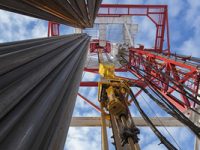How to Specify the Proper Sized Heat Exchanger for Your Hydraulic System
 Given the many risks of excess heat in a hydraulic system – such as fluid decomposition, increased wear on system components, damage to seals and bearings, etc. – the need for an effective heat exchanger is often an essential consideration.
Given the many risks of excess heat in a hydraulic system – such as fluid decomposition, increased wear on system components, damage to seals and bearings, etc. – the need for an effective heat exchanger is often an essential consideration.
Smaller hydraulic systems with low operating temperatures may be able to rely on natural convection, but when that doesn’t provide sufficient cooling, a heat exchanger must be installed. You can also assume a heat exchanger is needed when a specific oil temperature is required to stabilize hydraulic fluid viscosity, or when equipment has a history of hot oil problems, such as shortened seal life or frequent oil breakdown.
Whether you work with large mobile equipment (for example, construction, military, forestry, and material-handling units) or commercial/industrial process machinery with hydraulic systems, hot fluid is a concern. A properly sized heat exchanger in any equipment can save time, money, repair headaches and extend system life.
 To learn more about heat exchanger types and choosing the proper size for your hydraulic system, download the whitepaper.
To learn more about heat exchanger types and choosing the proper size for your hydraulic system, download the whitepaper.
Keeping your cool in choosing the right heat exchanger
So how do you determine which heat exchanger is best for a particular application? As with most design challenges, the answer is, it depends.
Accurately defining hydraulic cooling needs can be confusing because actual heat generation often varies as a machine goes through different cycles and because ambient temperatures or other environmental factors can affect system heat levels. When considering application and sizing of heat exchangers, the ideal operating temperature of the hydraulic fluid and the time it takes to arrive at that temperature must be used.
“There are many factors to consider and a wide range of heat exchangers, with certain benefits to each kind. The choice of a heat exchanger generally ties directly to the type of system to be cooled. That means you have to take into account vital parameters like heat load, available space, environmental conditions, power source, noise, operating costs, and so on.”
Rick Morton, business development manager, Parker Accumulator and Cooler Division.
Whether it’s a new design or a retrofit, it’s hard to pick the right heat exchanger without identifying the challenges and performing all the calculations. Fortunately, most heat exchanger manufacturers offer software to help you determine the best fit for each application. For example, we provide an online calculator (Essential Cooler Sizing Parameters) and other interactive resources where an engineer can plug in specifications to get a better idea of what exactly is needed.
Simplifying the choice
Given the many variables involved, it’s not uncommon for some engineers to delay their decisions on heat exchanger specifications until after seeing how a system performs and how much heat transfer is actually needed.
When you have questions, it’s often best to simply contact a heat exchanger supplier directly. Here at Parker, if a customer comes to us with questions on heat exchanger specifying, we can walk them through the process.
Getting started
Before reaching out to a manufacturer for assistance, a bit of preparation will go a long way in expediting the selection process. For example, gathering the necessary information such as heat load parameters and other key influencing factors.
 Article contributed by Rick Morton, business development manager, Parker Accumulator and Cooler Division.
Article contributed by Rick Morton, business development manager, Parker Accumulator and Cooler Division.
Related, helpful content for you:
Hydraulic Pump/Motor Selection Considerations for High-Production Shredding Applications
How to Choose the Right Fluid Power Hose
Reduce Failure of Hydraulic Systems with Preventive Maintenance
Source: Parker Feed





